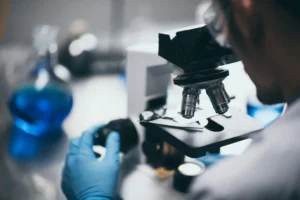Table of Contents
What is Optical Rotation?
Optical rotation is a technique used to measure the rotation of polarized light as it passes through a sample. This technique is commonly used in chemistry and pharmaceuticals to determine the purity and identity of a substance.
How does it work?
When polarized light passes through a sample, the molecules in the sample rotate the plane of polarization. The amount of rotation is dependent on the concentration, temperature, and wavelength of the light. By measuring the angle of rotation, the concentration and purity of the sample can be determined.
Types of Optical Rotation Determinations
There are two types of optical rotation determinations: specific rotation and observed rotation. Specific rotation is the rotation of a pure substance at a specific temperature and wavelength, while observed rotation is the rotation of a sample in solution.
Instruments Used
The most common instrument used for optical rotation determinations is a polarimeter. A polarimeter consists of a light source, polarizer, sample cell, and analyzer. The sample cell is filled with the sample solution, and the analyzer measures the angle of rotation.
Applications
Optical rotation determinations are used in a variety of applications, including pharmaceuticals, food and beverage, and chemical manufacturing. In pharmaceuticals, optical rotation is used to determine the purity and identity of active ingredients. In food and beverage, it is used to determine the concentration of sugars and other compounds. In chemical manufacturing, it is used to monitor the purity of raw materials and finished products.
Limitations
Optical rotation determinations have some limitations, including the need for a pure sample and the sensitivity to temperature and wavelength. Additionally, some compounds do not rotate polarized light, making this technique ineffective for those substances.
Conclusion
Optical rotation determinations are a valuable tool in chemistry and pharmaceuticals for determining the purity and identity of a substance. While there are limitations to this technique, it remains an important analytical tool for many industries.




